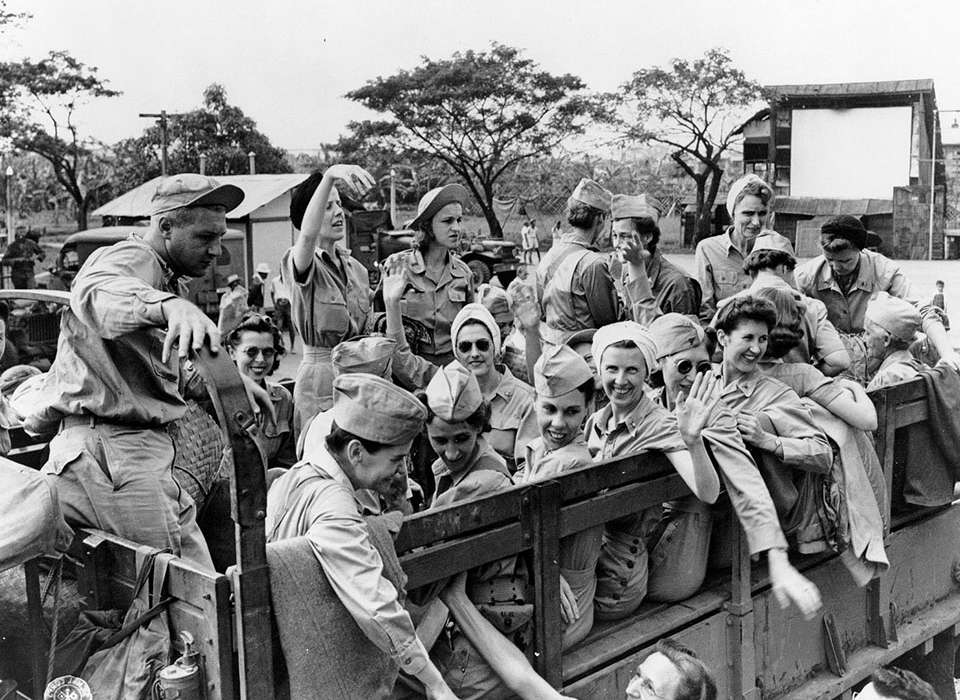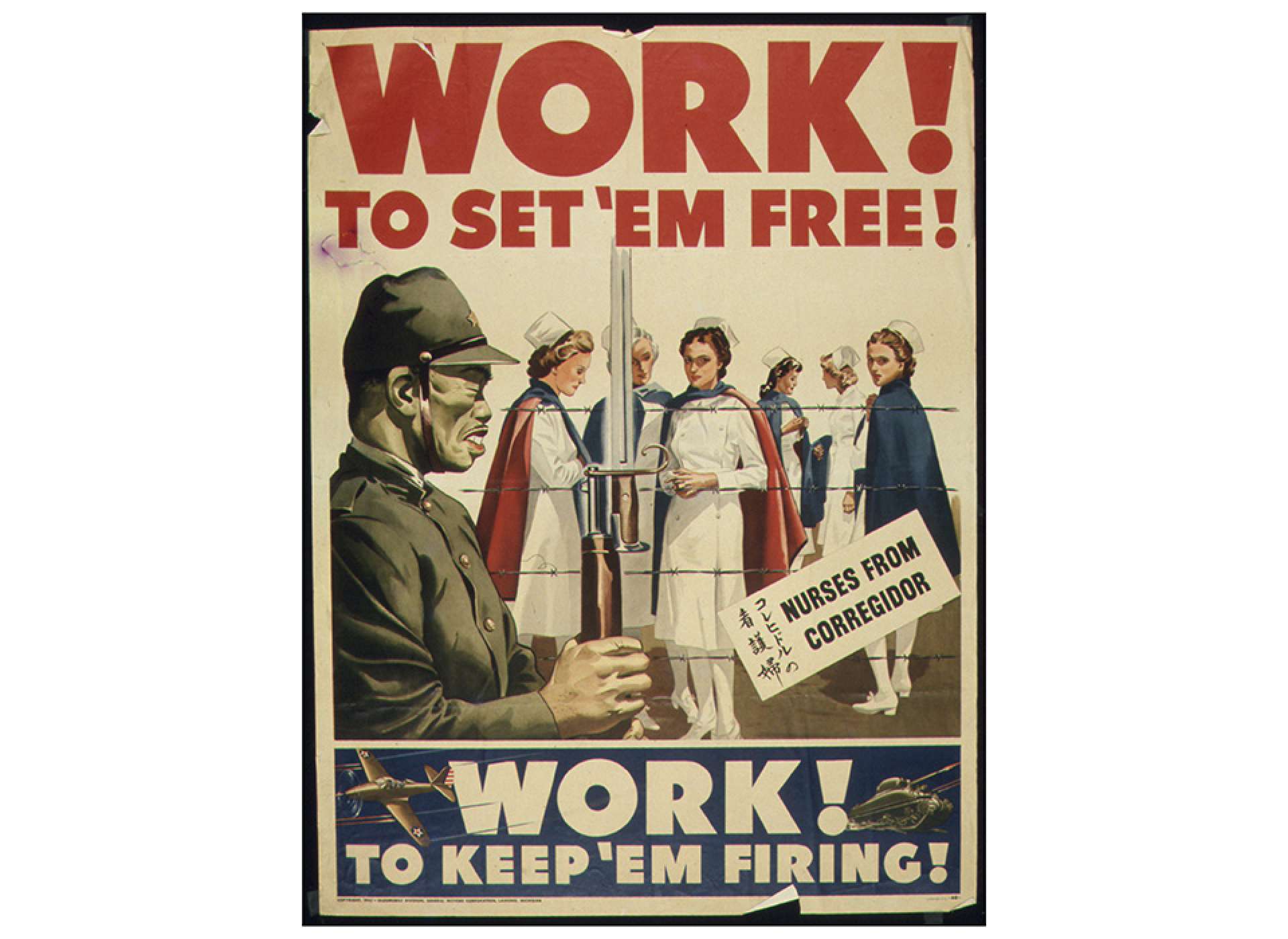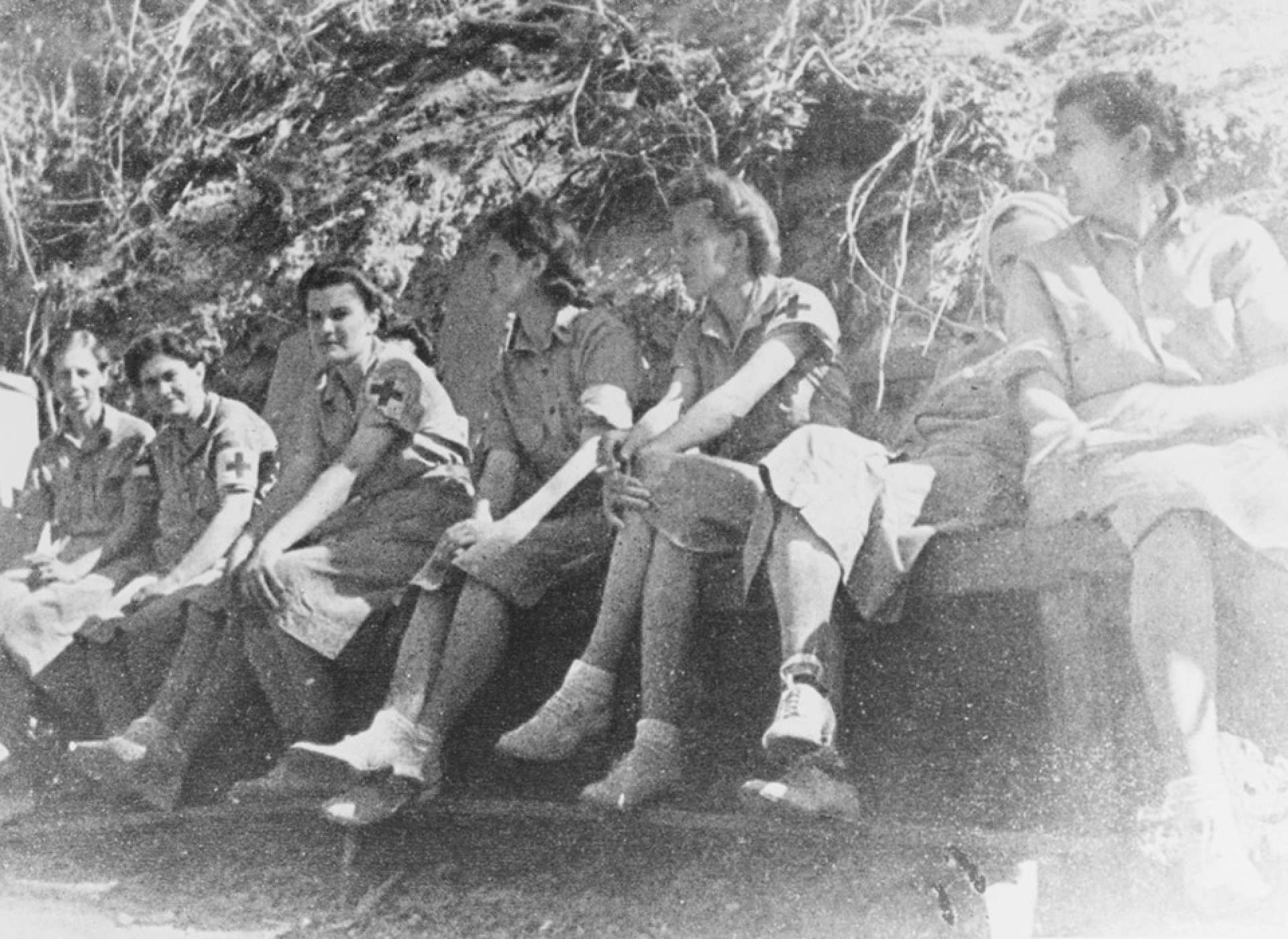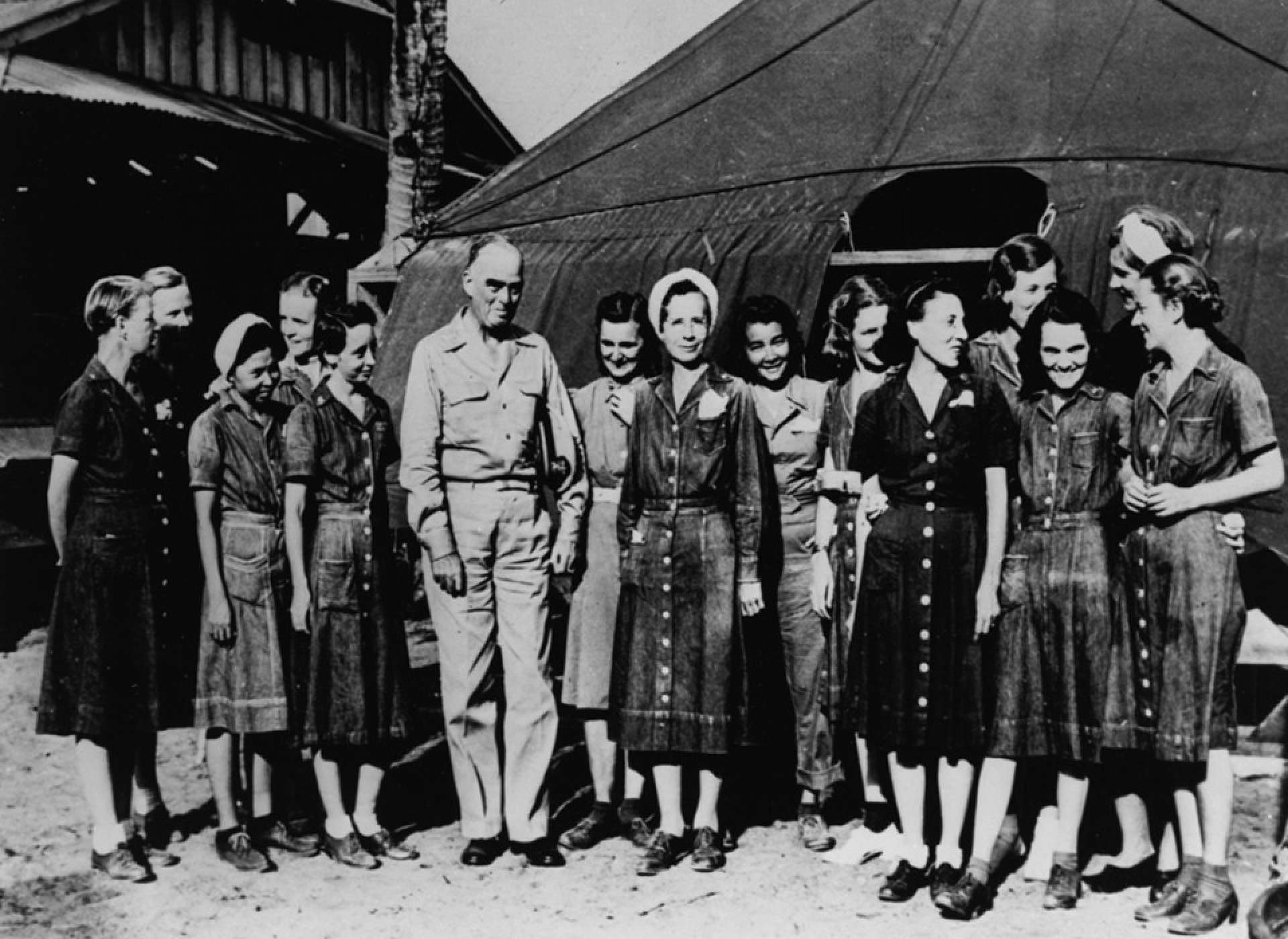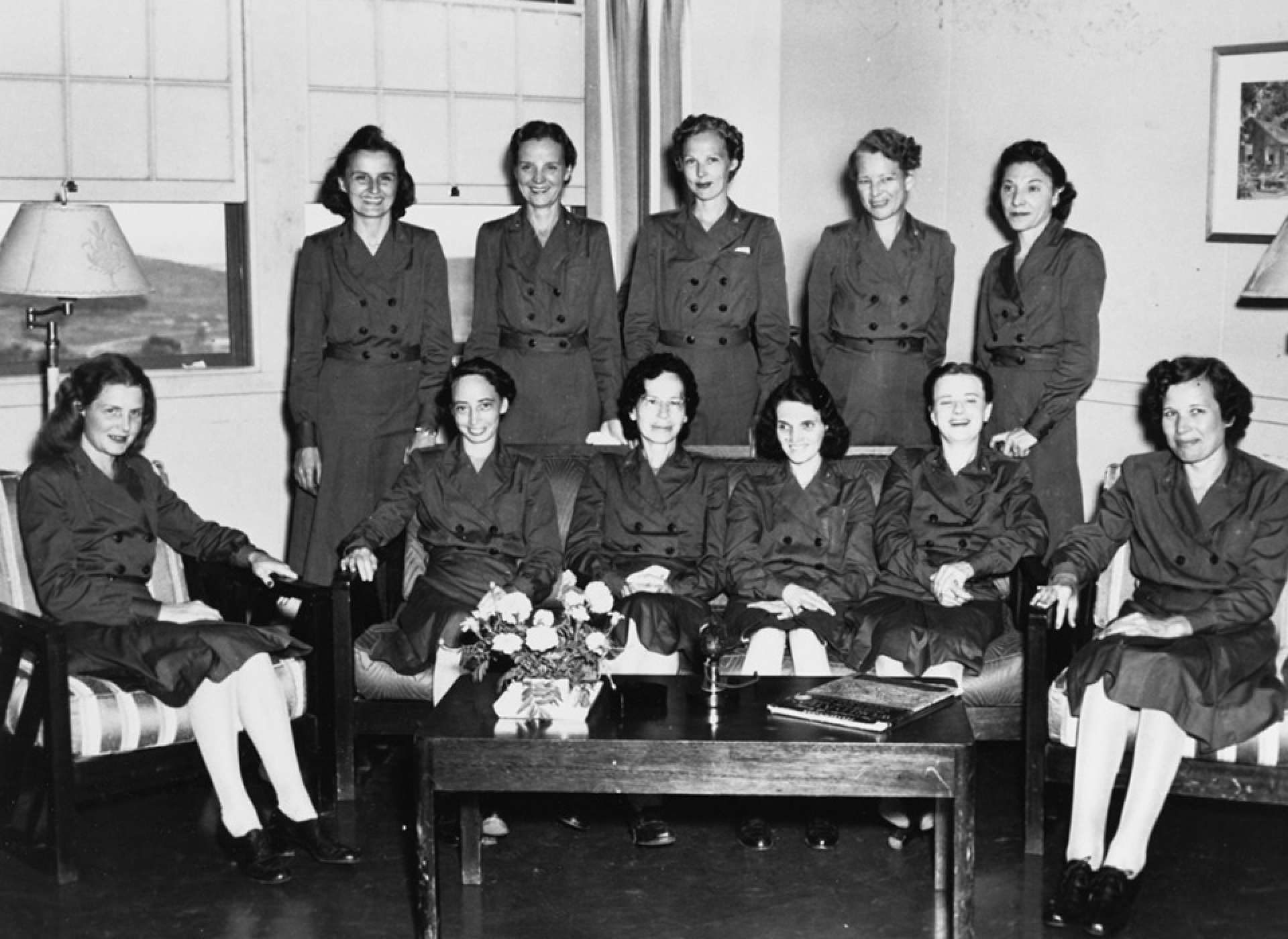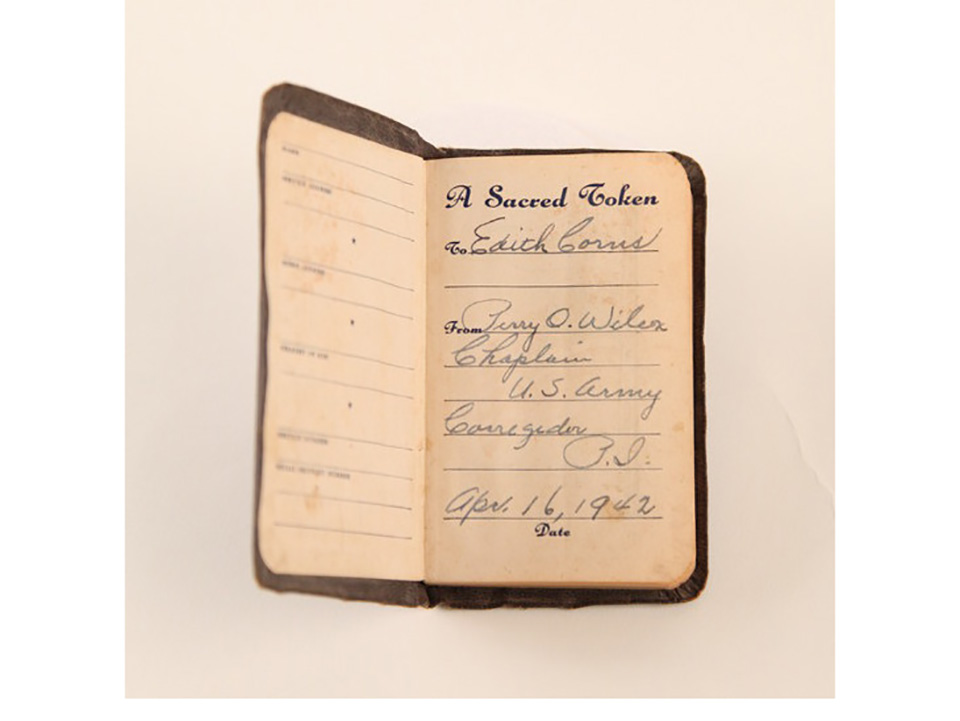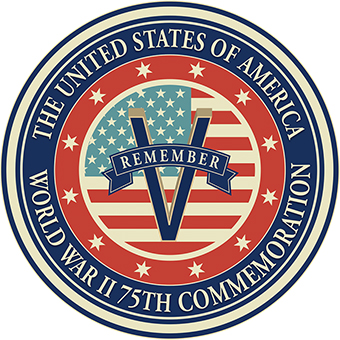Among the more than 27,000 American military personnel held as POWs in the Pacific were 77 US military nurses. The women, members of the Army Nurse and Navy Nurse Corps, would come to be known as the “Angels of Bataan and Corregidor.” Taken prisoner in the Philippines, the nurses were separated from their male counterparts in service and held with civilian POWs in the Santo Tomas and Los Banos Internment Camps. In those critically undersupplied camps, they were able to provide vital professional care to all of the Allied POWs held there. Miraculously, the nurses all survived the long imprisonment from May 1942 to February 1945, but after liberation, received little recognition as military prisoners of war. But most of the nurses said that they didn’t do anything extraordinary, they were just doing their jobs.
“I don’t consider myself a hero. None of us do.”
Lt. Col. Madeline Ullom, ANC
Prior to the entry into war, the Philippines was a choice assignment for nurses looking for adventure on a two-year tour of duty. Beginning with the first Japanese attacks on the Philippines, the nurses pivoted from their regular duty shifts to trauma nursing, tending to the casualties of the bombings of Clark Field. Some nurses were able to escape from Manila, where most of them were based, to Bataan prior to the Japanese capture of the capital city of Manila. But 11 Navy nurses surrendered there in January. The remaining Army nurses worked around the clock in two hospitals set up in the jungles of Bataan with 18 open-air wards containing 300-400 patients each, wounded and increasingly sick and weak troops.
On April 9, 1942, just prior to the fall of Bataan, the women were moved to the island of Corregidor. From there, arrangements were made to evacuate a small group of nurses, but 66 remained and were captured with the fall of Corregidor on May 6. They were the largest group of American women taken captive and imprisoned by an enemy. Both the Japanese and Americans used the capture of the nurses as propaganda; the Japanese to boast of their victory in the Philippines, and the Americans to inspire patriotism and revenge.
-

US propaganda poster showing Navy nurse POWs courtesy National Archives.
-

Newly captured Army nurse POWs on Corregidor photographed by the Japanese. Courtesy of the Naval History and Heritage Command.
In July, the nurses were put into Santo Tomas Internment Camp (STIC) in Manila. Santo Tomas became a POW city of roughly 6,000 people. The nurses helped to establish Santa Catalina Hospital on the grounds of the camp. They helped to stem epidemics in the overcrowded camp, organizing a public health campaign in the most unsanitary conditions. The nurses treated patients with minimal supplies in spartan conditions for accidents, disease, and malnutrition. The weight loss due to starvation in the camps averaged around 32 percent of an individual’s body weight. The American nurse POWs were not just waiting to be liberated, they were fighting to survive and to ensure the survival of others. All 77 survived until liberation by American forces. The Army nurses were liberated from Santo Tomas in early February and the Navy Nurses, who had been moved to Los Banos Internment Camp, were liberated three weeks later.
-

Liberated Navy nurses at Leyte, February 23, 1945. Courtesy of the Naval History and Heritage Command.
-

Ex-POW Navy nurses in Hawaii, March 1945. Courtesy of the Naval History and Heritage Command.
The Army Nurse Corps leadership is largely credited with their group’s survival. Chief Nurse Capt. Maude C. Davison was 57 years old at capture with decades of service experience, including during World War I. Second in command was the 47-year-old LT. Josie Nesbit. Under Davison and Nesbit’s command, the nurses maintained a regular schedule of nursing duty while prisoners of war. They had routine daily four-hour shifts, giving them purpose and a reason to survive. In 2001, Maude Davison was posthumously granted the Distinguished Service Medal.
The Museum’s collection contains a piece of comfort and hope that belonged to one of the “Angels,” a Bible that belonged to Army nurse 2nd Lt. Edith Corns. Methodist Chaplain and WWI veteran Col. Perry Wilcox gave the book to Corns on April 16, 1942 on Corregidor, and she kept it with her while in Santo Tomas. Col. Wilcox also survived and was liberated from Bilibid Prison on February 4, 1945.
To learn more on these nursing heroes, watch Dr. Elizabeth Norman’s 2015 Mason Lecture on her book We Band of Angels: The Untold Story of the American Women Trapped on Bataan at The National WWII Museum.
This article is part of a series commemorating the 75th anniversary of the end of World War II made possible by the Department of Defense.
Kim Guise
Kimberly Guise holds a BA in German and Judaic Studies from the University of Massachusetts Amherst. She also studied at the Universität Freiburg in Germany and holds a masters in Library and Information Science (MLIS) from Louisiana State University. Kim is fluent in German, reads Yiddish, and specializes in the American prisoner-of-war experience in World War II.
Cite this article:
MLA Citation:
APA Citation:
Chicago Style Citation:
